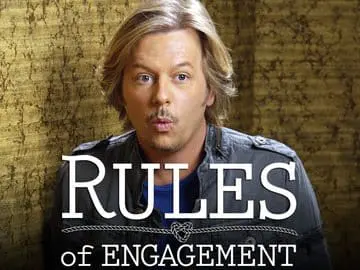
Last week I talked with a lot of corporate inbound marketers about the results they were (or weren’t) getting from inbound marketing. Of course, one common issue was lackadaisical blogging. Come on folks! Blogging twice a month doesn’t have any impact and doesn’t help you build website traffic. The new standard from Google is blogging twice a week minimum.
But the other thing I discovered was more surprising. I asked how they were doing with social media, and the most frequent response was, “We’re on Twitter and Facebook and LinkedIn.” Having accounts on these platforms is a good start, but you need to USE the platform to drive new traffic to your website. Want to get more website traffic, higher rankings, and more trust? Spend some time creating awesome content (at least twice a week) and sharing that content in social media to attract visitors and build links.
9 social media rules of engagement for more website traffic
1. Tweets have a short lifecycle, so tweet often.
Share your newest blog article on Twitter. @DanZarrella analyzed just over 5 million twitter accounts and compared the number of times per day that they tweeted (on average) to the number of followers they had. He found that Twitter followers peaked with accounts that tweeted around 22 times per day, and there was no steep dropoff beyond that (The Science of Marketing, by Dan Zarrella, 2013). So it’s pretty hard to over-tweet!
Don’t just share your new blog post or landing page once, share it lots of times. As soon as you publish your newest masterpiece, send a tweet out right away and schedule tweets to go out over the next 3-4 weeks.
2. Retweets get your content out to a wider audience. Tweet lots of articles or landing pages with links.
The same study by Dan Zarrella found that there is a sweet spot of linking for maximum retweets. Accounts that posted 60-80% links tended to get the most retweets. If your goal is to get your content shared, you’ll be best served by focusing on sharing a lot of interesting content, rather than replying to every message you get.
3. Calls to action work in social media – use them! Tell readers what you want them to do.
Next, Dan looked at the power of asking for retweets. He broke 20,000 randomly selected tweets into three groups: those that contained the phrase please retweet, those that contained please RT, and those that contained neither of these phrases. He found that only 12% of the “neither” group’s tweets were retweeted — and more than 50% of the “please retweet” group’s tweets were retweeted.
On Facebook, use the word “comment” in your call to action.
4. Post your content on Facebook between 5 pm and midnight, and on Saturdays and Sundays to maximize your likes.
Content posted on Facebook between 5 pm and midnight gets more likes than content posted at other times during the day. And content posted on Saturday and Sunday tends to get more likes than content posted during the business week.
Photos work well on Facebook as they capture interest quickly, and bring the reader to actually read the text with the photo to learn more. To get more “likes”, use short posts of under 100 characters, or meatier posts of 390 to 780 characters (data from Dan Zarrella).
5. Adjust your posting frequency for each social media channel.
Dan Zarella’s research revealed that Facebook fan count is the highest for pages posting 0.5 to 0.6 times a day — roughly every other day. Frequency is something you should experiment with; there is a high likelihood that your audience varies from the average, but start your experimentation from this best practice frequency.
6. Add social sharing buttons on every blog post and every landing page.
Make it easy for people to share your content right from your blog! Use at least these four buttons, and more if you find your audience on other social channels.
7. Join LinkedIn Groups and post your content there.
LinkedIn has found a clever way to sort people by their interests into Groups. Join Groups that are comprised of your targeted audience and share your content (with links!) with them. They’ve already indicated that they are interested in your content by selecting that group — thus we’re finding LinkedIn traffic converts to leads at a rate of 9-12% (compared with Twitter at around 2%).
The lifespan of a post on LinkedIn is relatively long, so post a couple blog posts and a landing page each week. Then spend a few minutes each day responding to discussions in those groups. Many companies, both B2B and B2C say they get many of their leads from LinkedIn.
8. Share every blog post and every landing page on Google+.
Hey, it’s Google! Sharing on Google+ impacts your overall search rankings. Add some people to your circles, accept all newcomers who want to connect on Google+, and share your content. Need I say more?
9. Be sure your profile is complete on every social media platform you use.
Make sure your profile is complete on every social media platform you use. Add a nice business photo of you, add a description, and fill in all the other fields of your profile. Want some ideas of what your profile should look like? Go the to social media accounts of three thought leaders in your industry and you’ll have a pretty good idea.
That’s it, the 9 social media rules of engagement for more website traffic. You can extend these rules to other social media platforms beyond the ones I listed here. And as far as Dan’s data goes, do your own testing based on your audience and see what your results are.
Sharing your content with a link back to the article on your blog or to your landing page will bring a lot of new traffic to your website and will build incoming links. And since you’re a savvy inbound marketer, sharing your content regularly on social media platforms will bring you more leads and customers!
